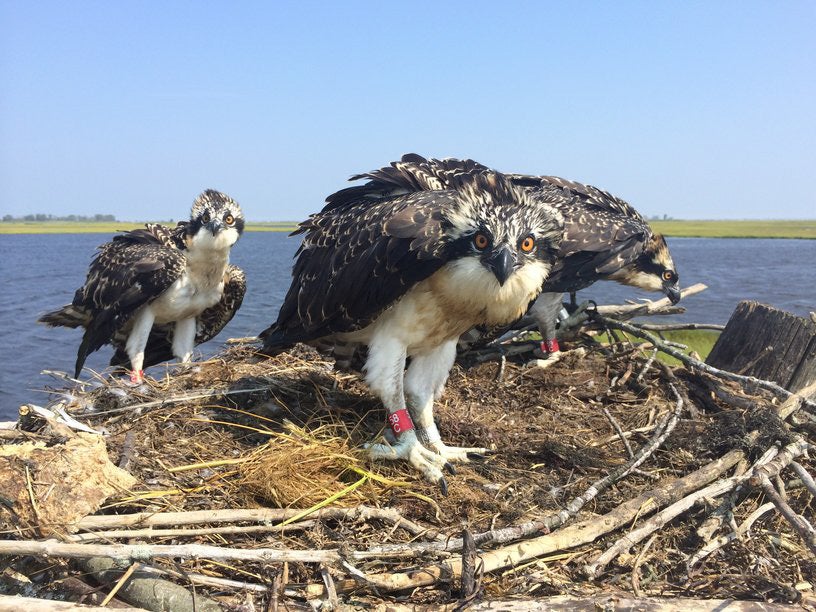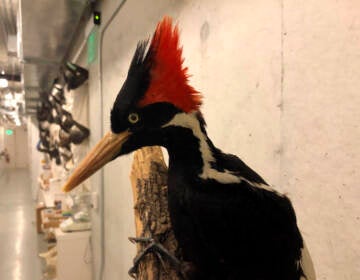‘Most productive’ year ever for N.J. ospreys in 2018, study finds
Once again, the New Jersey osprey comeback story added another happy chapter to 2018, a report released by the Conserve Wildlife Foundation of New Jersey finds.

Three young osprey wearing red bands in a New Jersey nest. (Photo courtesy of Ben Wurst/Conserve Wildlife Foundation of New Jersey)
Once again, the New Jersey osprey comeback story added another happy chapter to 2018, a report released by the Conserve Wildlife Foundation (CWF) of New Jersey finds.
Highlights from the 2018 osprey report, which provides the number of nesting pairs, active nests, and nest productivity for the hawks throughout New Jersey, include 589 active osprey nests surveyed.
Researchers determined that the nests produced 932 young ospreys (up from 892 in 2017), the most ever recorded in the project’s history.
[Related: In Barnegat Bay’s Sedge Islands, ospreys reign]
The study cites favorable weather, including no severe winds “that could have caused localized failures in nest colonies,” as factors to the record number.
Only 50 osprey pairs remained in the state during the early 1970s, nearly eradicated due to pesticide use and habitat loss.
“Their ultimate recovery is due to the overall health of our estuaries and marine ecosystems, and their prey who have flourished in these areas,” said CWF Habitat Program Manager Ben Wurst. “Ospreys have largely benefited from the preservation of our coastal salt marshes and the habitat that they provide.”
[Related: 17-year-old osprey, one of N.J.’s oldest, still mates, raises young]
New Jersey’s Division of Fish and Wildlife biologists, CWF biologists, and dedicated volunteers collected the data.
66 young ospreys in nests around Island Beach State Park were marked by volunteers and staff with United States Geological Survey leg bands for future tracking, according to the report.
Plastic, string, ribbon, and fishing line were found throughout most areas where ospreys collect nesting materials, putting the hawks at risk of entanglement, according to the survey.
“Ospreys simply use this material as it becomes a more abundant resource,” the report notes. “Almost all nests in New Jersey contain some type of plastic.”
In 2018, a few ospreys were rescued and untangled, while several more were found dead from being entangled, according to the report. But while debris remains a concern and puts the hawks at risk, the overall osprey success story continues.
“Only decades ago, ospreys had drastically declined across New Jersey and the nation, which makes their continuing recovery all the more remarkable,” said CWF Executive Director David Wheeler. “The ospreys’ expansion speaks both to the improving water quality of our estuaries and rivers and the dedication and leadership of our state and CWF biologists and volunteers.”
Wurst says the project receives no dedicated funding from the state or federal government and is supported by private funding efforts.
WHYY is your source for fact-based, in-depth journalism and information. As a nonprofit organization, we rely on financial support from readers like you. Please give today.




